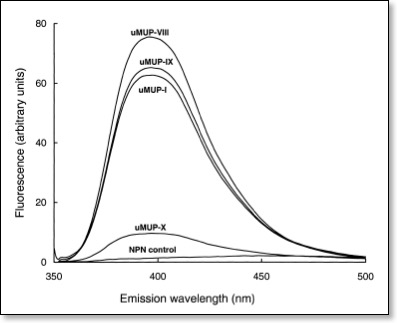MUP polymorphism & ligand binding

Marie,A.D., Veggerby, C, Robertson, D.H.L., Gaskell, S J., Hubbard, S.J., Martinsen, L., Hurst, J.L. & Beynon, R.J. (2001) The effect of protein polymorphisms on ligand binding by Major Urinary Proteins. Protein Science 10, 411-417 [PUBMED] [PDF]
Mouse urine contains an abundance of major urinary proteins, lipocalins, whose roles include slow release of semiochemicals. These proteins are highly polymorphic, with small sequence differences between individual members. In this study, we purified to homogeneity four of these proteins from two strains of inbred mice and characterized them by mass spectrometry. This analysis has led to the discovery of another variant in this group of proteins. Three of the polymorphic variants that map to the surface have no effect on the binding of a fluorescent probe in the binding cavity, but the fourth, characterized by a Phe to Val substitution in the cavity, shows a substantially lower affinity and fluorescence yield for the probe. These results are interpreted in light of the known crystal structure of the protein and molecular modeling calculations, which rationalize the experimental findings. This work raises the possibility that the calyx-binding site can show specificity for different ligands, the implications of which on pheromone binding and chemical communication are discussed.